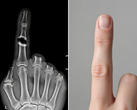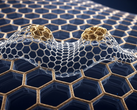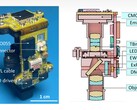Pressure ulcers afflict 2.5 million patients annually in the U.S. alone, costing $11 billion in treatment and leading to 60,000 fatalities each year [2006 data]. Common among the elderly, post-surgical patients, and individuals with limited mobility, these painful wounds form when sustained pressure cuts off blood flow to tissues, leading to necrosis. Current alternating-pressure mattresses attempt to mitigate this by attempting to minimize overall pressure.
This new study has revealed that a better way to prevent pressure ulcers is not to minimize pressure uniformly, but to strategically alternate between increased peak pressures and deep “off-loading” phases. Based on this discovery, the researchers have built a new type of mattress that reduces the area of persistent occlusion (APO) — tissue regions where blood flow remains blocked — by 34 times compared to standard medical foam pads at an occlusion pressure threshold (OPT) of 32 mmHg.
To rigorously study the problem, the research team built a sophisticated test mattress with 1,260 independently controlled linear actuators. They discovered that conventional wisdom — trying to keep pressure low everywhere — was not the most effective strategy. Instead, the key was to create the largest possible difference between high-pressure zones and relieved “off-loading” zones, and to alternate them periodically. This was achieved by creating a checkerboard-like surface that alternates between high-pressure peaks and low-pressure pits.
The mattress uses flexible joints and static-balancing springs to achieve energy-efficient transitions between pressure states. This design reduces actuation force to <9% of the patient’s weight, enabling manual or automated operation. It adapts to bed frame adjustments like raised head and knee positions, without compromising pressure distribution.
The tests were carried out on anatomically correct dummies, this was done to ensure stillness of the participants and the accuracy of data collected. The introduction of this tech could result in more portable and cost-effective alternating-pressure mattresses, but further research and tests are needed.





























